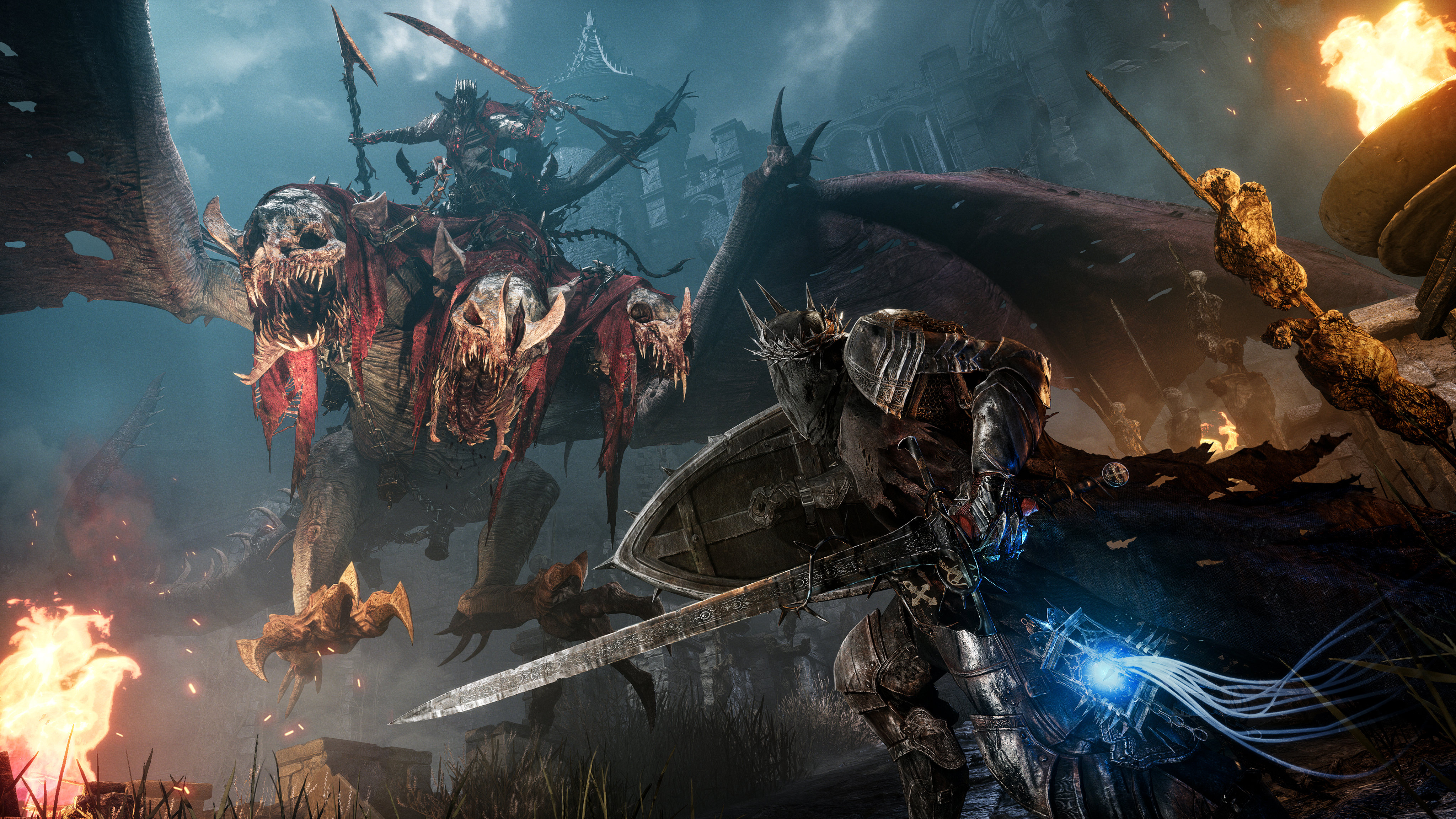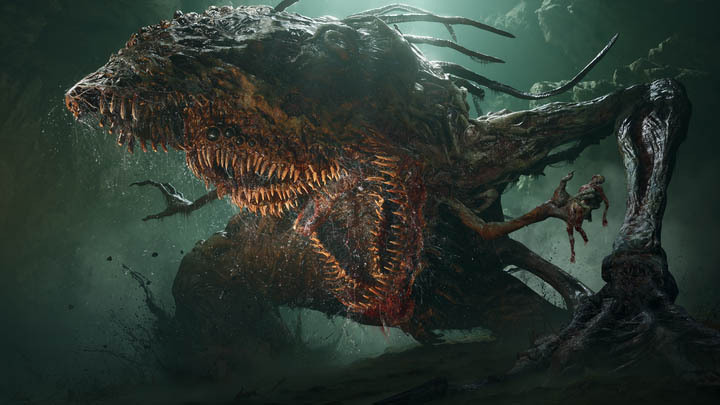I just played the new Lords of the Fallen reboot — it finally sells me on soulslikes
Lords of the Fallen 2023 hands-on: fast, fluid combat and a second chance at life after death

As a fan of dark fantasy, Gothic horror, and nightmare-conjuring creature designs, I continually find myself drawn to games like Dark Souls, Bloodborne, and Elden Ring. But while these titles immediately grab me with their mythical monsters and mysterious, menacing worlds, they're unforgiving, with an often frustrating difficulty that sees me checking out just as fast.
As part of the increasingly popular “soulslike” sub-genre, such titles typically include deep, tactical combat, incredibly challenging boss battles, and — most dispiriting for the fainter of heart — the constant threat of losing considerable progress when you're unable to reclaim your hard-earned experience after an undignified demise.
Like the aforementioned games, the upcoming reboot of Lords of the Fallen appealed to me right out of the gate. Sporting stunning visuals, a nerve-fraying fantasy universe, and the sort of fanged, clawed, and horned beasts that could make you soil your shorts before you even begin battling them, the action RPG had me excited to pick up the controller at a recent hands-on event.
But what had me even more enthusiastic was its promise of making the intimidating soulslike experience more accessible to mainstream audiences. Both a sequel and reboot of 2014's entry of the same name, Lords of the Fallen leans into all the expected elements, from strategic combat and thumb-blistering boss fights to the unfortunate opportunity to see your brave protagonist repeatedly stripped of their progress.
Quicker, but still brutal, combat

While Lords of the Fallen retains these defining characteristics though, it's also tweaking and evolving them with an eye towards welcoming less-seasoned players into this decidedly hardcore space.
For starters, the combat doesn't carry that measured, lumbering feel of similar games. Mindlessly spamming attacks still won't get you very far, but there's a satisfying speed and fluidity to the melees that could almost fool you into thinking you're hacking and slashing from behind the blades of one of Diablo IV's dungeon-clearing heroes.

During my demo, I found myself rapidly switching between ranged and close-quarters attacks, seamlessly swapping among an impressive arsenal of spells, and evading incoming blows — with both quick dashes and more distancing rolls — in combat that felt lighter and free-flowing than heavy and deliberate. Encounters still required planning, precision, and patience, but the lightning-quick cadence definitely afforded it a more rewarding, accessible feel.
Get instant access to breaking news, the hottest reviews, great deals and helpful tips.
Make no mistake, while the combat surprisingly clicked with me, my sword-swinging Dark Crusader was still opened from bellybutton to brainstem more times than I'd care to admit. Lords of the Fallen 2023 still packs a steep challenge, especially when you meet big bads, like Pieta, a blood-soaked knight who'll easily embarrass you on the battlefield. And that's before she morphs into her final form, sprouting massive wings and summoning storms of blades to repeatedly rain death upon you.
Not-so-Dark Souls

It was during this first boss battle, however, that I was introduced to Lords of the Fallen's most promising feature. Representing a significant departure from the typical soulslike death-loop, the game doesn't send you all the way back to your last save point upon death. Rather it re-spawns you right where you fell; well, almost. More specifically, you rise in the same spot, but in a parallel underworld dubbed “Umbral.”
In this darker realm, you don't travel the same path and fight the same re-spawned enemies in an effort to make it back to your corpse and coveted resources. Instead, you're essentially granted a second life, offering you another chance to fight your way out of the underworld and back to the land of the living. It's a slightly more forgiving, far more organic take on the previously established template that's led to more than its fair share of gamepads being tossed in frustration.
But while this parallel world might initially seem like a get-out-of-jail-free card for less hardened players who can't cut it in the living realm, it also holds plenty of perks for genre vets.
Umbral can be accessed anywhere, anytime — not just when an untimely death forces you there. Using a magic lantern, players can peer into the underworld at their leisure. If they happen to spot something more enticing than the ghoulish hordes populating this netherworld, they're welcome to cross over at will. These brave explorers might discover rare loot, fruitful character interactions, passage through areas that are blockaded in the realm above, or even entirely new spots that don't have a living world counterpart.
My lengthy demo teased a number of other novel features, from the power to slow enemies by flaying their souls to the ability to create your own resurrection spots, that could further make the game more accessible. Umbral's potential appeal, for casual players craving that “second chance,” as well as experienced fans seeking an engaging risk-reward loop, however, is its most significant, evolutionary inclusion. Coupled with the fast-paced combat, the seamless, dynamic ability to switch realms — and maybe outsmart death in the process — is what will literally drag me back to a genre that's previously pushed me away.
More for Tom's Guide
- 5 of the best Assassin’s Creed games are free to play this weekend
- Don't pay $50 for Red Dead Redemption on PS4 or Switch
- I own an RTX 4090 gaming PC, yet I’d rather play my Switch OLED — here’s why

Matt is a US-based freelance writer and consultant and has been covering movies, TV shows and video games for over a decade. His work has appeared on IGN, Stuff, Rotten Tomatoes and Variety. As well as reporting on the latest in entertainment, Matt can sometimes be found spotting the latest tech deals for Tom's Guide.
When he's not writing, gaming or bingeing the latest shows, you'll find him in the basement of an abandoned building hoarding all the canned goods, med-kits, and shotgun shells.
